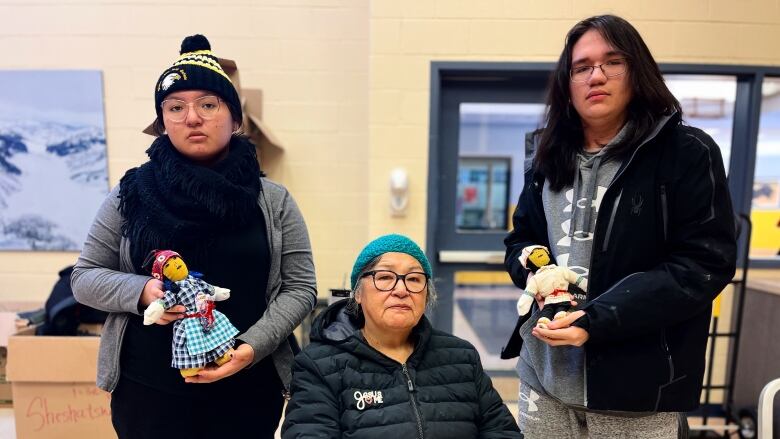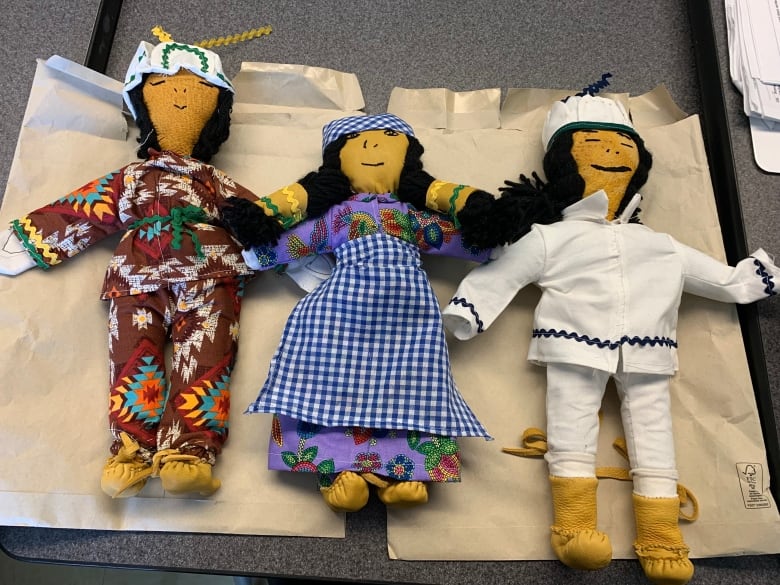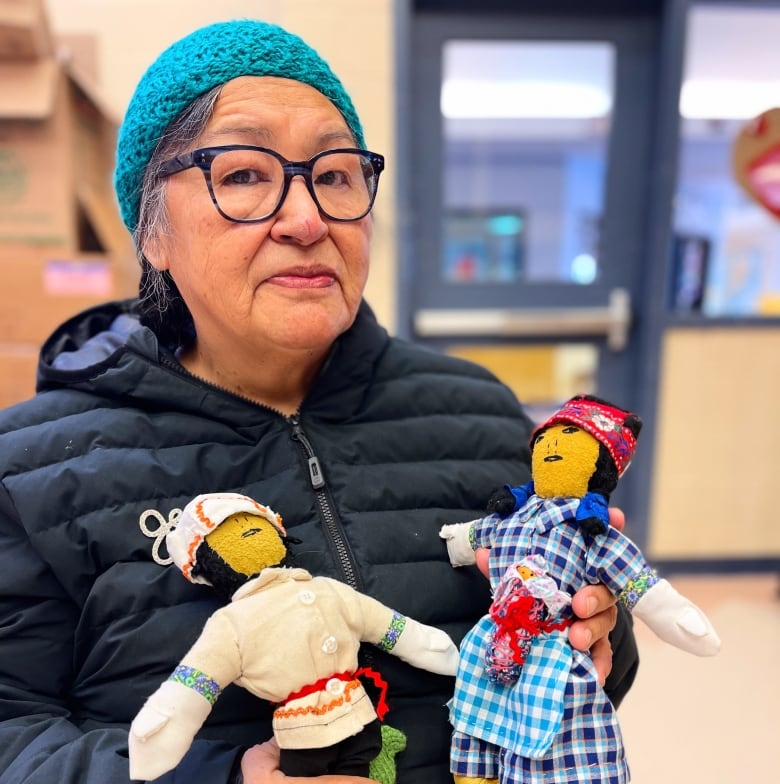Elder reviving tradition of Innu tea dolls at Sheshatshiu Innu School
Bridget Nuna says she learned from her mother and wants to share the knowledge

Decades ago, it was commonplace to see anInnutea dollunder the armof a child on the land, carrying a doll to play with but also holdingtea leaves for the family, and an Innu elder wants torevive the tradition.
Elder Bridget Nuna isteachinga newgeneration at Sheshatshiu Innu School how to make the traditional dolls.
"It's important that they don't lose their culture or traditions, especially the language, and I'm happy that they're trying their best to learn things," Nuna said. "It's good to soak in."
The tea dolls were traditionally made by Innu parents by stitching together caribou hide into the shape of a person and filling the inside with tea leaves, before covering the outside with clothing similar to what the Innu wore.
They were both entertainment for children and a way for children to help the family while living on the land. Thedolls were stuffed with the leaves to carry tea in an easy waybut the practice dwindled as families were settledintwo Innu communities in Labrador. Nuna said she doesn't want to see the traditional craftdisappear.
"My mother said that when the tea doll is empty out, they used to put moss," Nuna said.

Nuna was invited by one of the teachers and spent months working with students including her granddaughter passing on the knowledge.
Nuna's granddaughter, Helen Nuna, said she was excited to learn how to make the dolls, and hopes to make more.
"I feel like I should really start taking my culture more seriously," Helen said. "I feel like it's really fading away really fast, and, like, it kind of scares me because some kids eventually are going to grow up not knowing anything about it."

Daniel Ponepinette said it was confusing at first but got easier with practice. He and Helen Nuna used Tetley tea to stuff their own dolls.
"It was nice that [Bridget Nuna] had the time to do that for us. And she was really helpful with teaching us how to do it," Ponepinette said. "I think I'm going to, like, take part in more activities revolving around my culture."
From mother to daughter to granddaughter
Bridget Nuna remembers watching her mother Annie Michelle craft the tea dolls in her living room in the 1980s.
"I love watching her make the tea dolls because it was a special thing for her," Nuna said. "She always tells stories, talk about stories, old stories."
One of her favourites to tell was that in the country, when the woman or family needed tea, she would undo some stitches, take out just enough tea and stitch it back up for the children to continue to carry. Nuna said a fulltea doll would be very heavy for the child, then become lighter and lighter as the tea was used.
When the families would go back to the store, the tea doll would be refilled along with their other supplies, Nuna said.
"It was nice when she talked about stories like that," Nuna said. "She was a very wonderful teacher."

Nuna said she was honoured to teach her granddaughter and the other students. She hopes the school continues doing traditional work to make sure children know their culture and traditions.
"I hope for them that they will continue and hold on to their traditional ways like making tea dolls and traditional stuff," Nuna said. "I'm so happy that they succeeded. It's good."













_(720p).jpg)


 OFFICIAL HD MUSIC VIDEO.jpg)
.jpg)



























































































